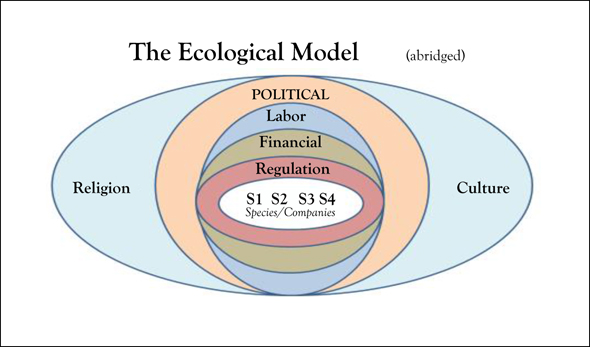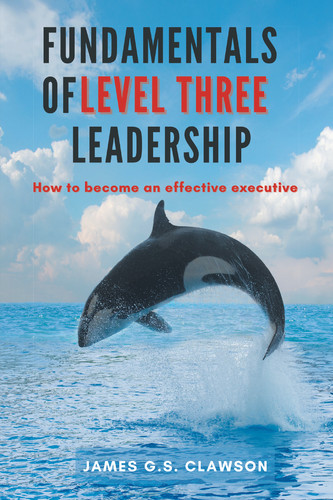Concept
Warren Boeker at Columbia University11 and others have been studying what they call the ecological model of organizational behavior and strategy. Essentially, they apply concepts from the fields of ecology and evolution to describe firm behavior within an industry. Organizations, like species, live in an environment and that environment affects the ability of the species or organization to thrive and persist. In nature, for example, studies have shown that the wolf and mouse populations of the northern tundra are highly dependent on each other for survival. If the wolves eat too many mice, the wolves will starve. If the wolves don’t eat enough mice, the mice will over populate and over graze their grass food and the mice will starve. Likewise if the climate changes and the snow and ice cover melts, what will happen to the two species?
Observers in this field note that, as in nature, there are companies who compete at the expense of others, companies who have symbiotic relationships with other companies so that survival is in the best interests of both, and companies who cannot or do not adjust to changes in the environment, which leads to their extinction.
Iansiti and Levien12 argue that the success of firms like Wal-Mart and Microsoft are largely attributable to ecological factors like the development of a global network of suppliers, distributors, loose and tight alliances within their industries, information sharing, and trends in the consumer markets. When companies begin to share their sales data, manufacturing data, and research data with suppliers and customers, they create a kind of ecosystem upon which all of the networked companies depend. The collapse of that ecosystem or any significant part of it would damage or kill off not only a subject company but any others that participated in that system.
The Ecological Model extends the value chain model as the value chain model extended the supply-chain model. This environmental approach now includes regulatory agencies for all the members of the industry, the labor markets facing those companies, the financial markets that shape exchange rates, political contexts, and, of course, religio-cultural contexts.
The concept of an ecological model of organizational behavior is hard to define. Identifying the boundaries of any particular business ecology would be very difficult. Instead, Iansiti and Levien argue, one should analyze the entanglements that an organization has with other organizations so that one can better appreciate, study, and plan for the multi-vectored forces that pull on the organization. Some of those forces may be distant and subtle, others more proximate and prominent.
Even more difficult, many of the domains of a business ecosystem may overlap with the domains of multiple other ecosystems—as when one country’s regulations affect more than one industry. Apprehending and managing such a diffuse and inter-connected sets of linkages is a huge and extremely difficult challenge of the modern executive. It requires an appreciation of economics, politics, cultures, religions, civil unrest, global financial markets, international trade balances, elections, and more.
Example
Iansiti and Levien report that Microsoft, for example, has system integrations with some 7,452 firms, 5,747 developmental services companies, 4,743 campus resellers, 3,817 independent software resellers, and dozens of other domains each with large numbers of participants. Can you imagine trying to understand and manage that kind of ecosystem?
Diagram

1. Identify three ways in which your company would be affected by the sudden disappearance of the two largest competitors in your industry.
2. Identify three ways that changes in one of the domains in your company’s ecological environment that would destroy your company.
3. Identify three ways that technological innovation would ruin your company.
11 Boeker, W. 1991. “Organizational Strategy: An Ecological Perspective.” Academy of Management Journal 34, no. 3, pp. 613–635.
12 Iansiti, M., and R. Levien. March 2004. “Strategy as Ecology.” Harvard Business Review.
